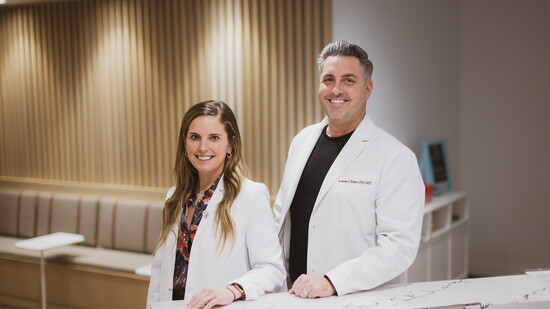Dr. Tasha Hall knows the importance of a smile. It can be the defining characteristic of a person’s appearance.
“Smiles are part of every photo,” she says. “It’s your first impression in an interview.”
However, Hall understands firsthand that not everyone feels comfortable smiling.
For more than a decade, she served as Director of Craniofacial Orthodontics at Indiana University and Riley Children’s Hospital. Her education and experience extend beyond traditional orthodontia, having allowed her to work with more challenging, multidisciplinary cases.
“In the craniofacial world, orthodontics tends to be more dramatic,” she says. “It has really allowed me to apply orthodontics to the whole body.”
Hall recalls a particularly rewarding case in which she worked through a challenging orthodontic problem with one specific patient who was denied treatment many times. She was able to bring positive lifelong change not only to her patient’s appearance but to her function as well.
According to Hall, orthodontics is sometimes determined to be “medically necessary” given the severity of the problem. Issues such as cleft lip or palate, impacted teeth and significant underbites and overbites are just a few examples of such instances.
“Orthodontics is the perfect blend of science and art,” Hall says. “Every patient is their own unique puzzle we get to solve.”
Hall is the owner of Hallmark Orthodontics. Together, she and Dr. Andrew Raber serve patients at the Carmel location, as well as in Noblesville, Shelbyville and Elwood.
Hallmark utilizes cutting-edge technology, such as an advanced imaging system for 3D X-rays. Taking goopy impressions has been replaced by intraoral scanners, allowing almost all orthodontic appliances to be fabricated in Hallmark’s in-house lab. A bracket system called LightForce allows the doctors to place a patient’s teeth in their final position on the computer and 3D print fully custom ceramic braces.
“We know patients have to come here a lot,” Hall say, “ so we want to make sure it’s a positive experience.”
The American Association of Orthodontists recommends children be seen by an orthodontist by age 7. She also encourages adults who aren’t confident in their smiles to get a complimentary orthodontic consultation.
“We love educating our patients about their dental conditions and explaining their treatment options,” she says. “Consultations do not mean you have to commit to treatment but rather provide you with the tools to make an informed decision.”
Hall points out that orthodontics improves health and functionality of your teeth and protects them from future damage. Now, that’s something to smile about.
“It is extremely gratifying to see a patient transform right in front of you,” she says. “Braces coming off is a wonderful combination of the patient’s hard work as well as our vision coming together.”
